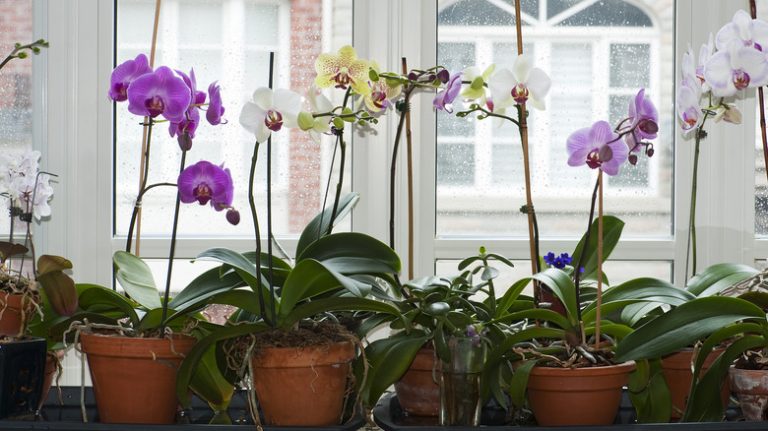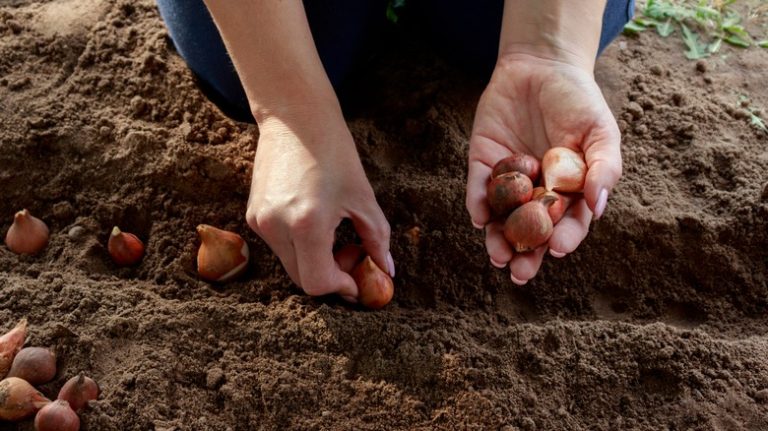The low-growing Cranesbill Geraniums are a popular choice for gardeners looking for no-fuss plants that can thrive in various conditions. With their beautiful cup-shaped flowers and attractive foliage, they add a touch of elegance to any garden or windowsill.
There are six popular varieties of this easy-to-care-for perennial plant. One of them is the Geranium sanguineum, also known as the bloody geranium, which gets its name from the deep red flowers it carries. Another variety is the Geranium macrorrhizum, which is named after its large rhizomes and is known for its wide range of shades, from lavender to pink.
One of the former zonal geraniums that won’t disappoint is the Geranium magnificum, with its royal blue flowers that attract butterflies. If you’re a gardening cooperative, the Geranium nodosum might be your best choice, as it spreads to form a mound and carries pink or white flowers.
If you’re looking for a variety that can withstand frost, then the Geranium pratense is the one for you. Its vibrant blue flowers bloom in late spring and it can be grown in a wide range of conditions. Another frost-tolerant variety is the Geranium x oxonianum, which is a great addition to any garden with its pink or white flowers.
When it comes to planting and care, Cranesbill Geraniums are not picky. They prefer a place with full sunlight, but they can also tolerate partial shade. They are not too demanding when it comes to watering, so you can water them sparingly. They grow well in damp soil and are resistant to most insect pests.
For propagation, you can either buy seeds or propagate them by dividing the plants in early spring or fall. To nurture seedlings, sow the seeds in a well-draining soil mixture and keep them moist. It’s also a good idea to keep them in a cool place like a windowsill or a greenhouse.
To sum up, Cranesbill Geraniums are a versatile and beautiful addition to any garden. With their low-growing and hardy nature, they are sure to thrive in a wide range of conditions. Whether you choose a vibrant blue variety or a delicate pink one, these no-fuss plants will bring color and life to your garden for many seasons to come.
For more gardening tips and plant varieties, check out our updated collection of gardening books on Amazon.
Cranesbill Geranium: How to Grow a Garden Classic
Crisscrossed with delicate hues and spruce foliage, hardy cranesbill geraniums are a beloved staple in many gardens. These zonal perennials can be found all over the world, but are most commonly associated with their native regions of eastern North America and Europe.
Their name “cranesbill” comes from the Greek word “geranion”, which means “cranesbill”. This refers to the shape of the seed pods, which resemble the beak of a crane. These self-seeding plants are also commonly known as geraniums, although they are not related to the colorful varieties commonly seen on windowsills.
When it comes to cultivation, cranesbill geraniums are truly a no-fuss plant. They can be planted in a variety of conditions, from full sun to part shade, and will thrive even in less than ideal soil types. Their low-growing nature makes them a popular choice for ground covers and border plants, and they are often featured in butterfly gardens.
One of the key characteristics of cranesbill geraniums is their basal growth habit. Unlike some other geraniums, their leafy growth emerges directly from the ground, giving them a somewhat leggy appearance. However, this growth habit allows them to fill in garden spaces and create a lush, full look over time.
The flowering season for cranesbill geraniums typically spans from late spring to early fall, depending on the variety. Their cup-shaped flowers come in a vibrant array of colors, including shades of pink, purple, and white. As the flowers fade, they give way to interesting seed pods that can be left to self-seed or removed if desired.
When it comes to care, cranesbill geraniums require minimal attention. They are relatively drought-tolerant and can survive in both dry and damp conditions. However, they will benefit from regular watering, especially during prolonged dry spells. Pruning spent flowers and leggy growth can help rejuvenate the plants and promote continuous blooming.
In summary, cranesbill geraniums are a classic and versatile plant for any gardener. With their easy care requirements and wide range of available varieties, they are sure to add beauty and charm to any garden space. Whether you choose to plant them as ground covers, in borders, or in containers, these hardy perennials are a reliable choice that will reward you with their stunning flowers and attractive foliage.
By Any Other Name…
Geraniums, commonly known as cranesbill, are a group of flowering perennials that truly thrive in the garden. These plants are easy to grow and require minimal care, making them a favorite among gardeners of all skill levels. They come in a variety of colors, from pinks and purples to whites and blues. If you’re looking to add some vibrant blooms to your landscape, geraniums are a cooperative choice.
There are six varieties of hardy cranesbill geraniums that you can grow. According to the University of Illinois Extension, these varieties are sanguineum, biokovo, rozanne, boom choco boom, dragon heart, and bloody cranesbill. Each variety has its own unique characteristics and growing requirements, so you can choose the ones that best suit your garden’s needs.
When it comes to planting geraniums, you’ll want to choose a spot that gets full morning sunlight. These plants prefer well-drained soil but can also tolerate somewhat damp conditions. Make sure to water them regularly, especially during the growing season in spring and summer. This will help to ensure healthy growth and abundant blossoms.
One of the many facts about geraniums is that they are quite hardy. They can withstand temperatures as low as -20°F (-29°C), making them a great choice for colder climates. Geraniums are also known for their basal foliage, which forms a mound-like shape as it grows. This gives the plants a neat and compact appearance.
Propagation is another no-fuss aspect of geranium cultivation. According to the University of Wisconsin, geraniums can be easily propagated by division or from seed. This means that if you have a healthy geranium plant, you can easily create new plants from it!
So why are geraniums commonly referred to as cranesbill? Well, the name “cranesbill” comes from the shape of the plants’ seed pods, which somewhat resemble a crane’s bill. This name has been used for centuries and continues to be a popular way to refer to these beloved perennials.
Whether you call them geraniums or cranesbill, these plants are a beautiful addition to any garden. They are low-maintenance, long-lasting, and full of vibrant colors. If you’re looking for a reliable plant that will spruce up your landscape, look no further than geraniums!
Cultivation and Propagation
Hardy cranesbill geraniums are a popular choice among gardeners due to their no-fuss cultivation and propagation. These plants, named for their resemblance to the beak of a crane, are commonly found in gardens and are familiar to many gardening enthusiasts.
When it comes to buying cranesbill geraniums, you have multiple options. You can buy them as potted plants from your local nursery or garden center. Alternatively, you can find them in seed form, which gives you the opportunity to grow them from scratch. Many online retailers, such as Amazon, offer a variety of geranium seeds for purchase.
Hardy cranesbill geraniums are known for their vibrant and diverse colors, making them a delightful addition to any garden. They come in shades of pink, purple, blue, and white, among others. With their classic, five-petaled flowers, they attract butterflies and bees, adding life and movement to your garden.
One of the benefits of cranesbill geraniums is their ability to self-seed. Once established in your garden, they can produce new plants from dropped seeds. This natural self-seeding is a handy feature that allows the flowers to come back year after year.
For those who prefer a more controlled approach to growing geraniums, propagation can be done by dividing the plant. In late spring or early summer, you can separate the basal rosettes of the plant and replant them in another area of your garden. This is a great way to expand your geranium collection or share them with a gardening friend.
Hardy cranesbill geraniums thrive in full sunlight or partial shade. They are adaptable to different soil conditions, but prefer well-draining soil. These plants can tolerate dry conditions but will benefit from occasional watering, especially during periods of drought.
For flowering geraniums, deadheading spent flowers can encourage more blooms. This can be done by removing the dried or faded flowers from the plant. Additionally, cutting back the geraniums by one-third after flowering can help promote new growth.
In terms of care, cranesbill geraniums require minimal attention. They are hardy plants that can withstand cold temperatures and even light frost. They are also resistant to most pests and diseases.
Whether you are a seasoned gardener or just starting out, cranesbill geraniums are a great addition to any garden. Their vibrant colors, no-fuss cultivation, and ability to attract butterflies and bees make them a delight to nurture. So why not plant some hardy geraniums and enjoy the beauty they bring to your outdoor space?
Nurturing Nature
In the world of gardening, there are few plants as cooperative and easy to care for as cranesbill geraniums. These hardy perennials thrive in a variety of conditions and come in a wide array of colors and varieties. Whether you have a large garden or just a small windowsill, you can enjoy the beauty of these plants.
The name “cranesbill” comes from the Greek word “geranos,” meaning crane, and refers to the shape of the seed pods that resemble a crane’s beak. These plants are also known as geraniums, although they are not related to the common garden geraniums often seen in pots and flower beds. Cranesbills have unique cup-shaped flowers that attract bees and butterflies, adding an extra touch of nature to your garden.
One of the great things about cranesbills is their self-seeding ability. Once the plant has spent flowers, it will produce seed pods that can be collected and used for propagation. If you have a particularly beautiful variety, you can easily spread it throughout your garden by growing new plants from the seeds. This can save you money and ensure that your garden is always filled with these lovely flowers.
When it comes to care, cranesbills are relatively easy to maintain. They prefer full or part sun and well-draining soil. The plants form a mound of foliage, with stems that grow upright or somewhat trailing, depending on the variety. The leaves are often deeply-lobed and have hairs on the surface, giving them a somewhat fuzzy appearance. In the growing season, cranesbills should be watered regularly to keep the soil moist, but not soaked.
There are many varieties of cranesbill geraniums to choose from, each with its own unique colors and growth habits. Here are six featured varieties that are known for their beauty and durability:
| Variety | Color | Growth |
|---|---|---|
| Bloody Cranesbill | Deep red | Upright |
| Former’s Royal Blue | Deep blue | Trailing |
| Classic Pink | Soft pink | Upright |
| Care Free | Pale lavender | Trailing |
| Cooperative White | Pure white | Upright |
| Insect Cup | Purple with dark veins | Upright |
Whether you choose a classic color like pink or white, or go for a more unusual shade like purple or deep red, cranesbill geraniums are sure to add beauty to your garden. So, pick your favorite varieties and start nurturing nature in your own backyard!
For more information on cranesbill geraniums, check out the updated book “The Hardy Cranesbill Geraniums: A Gardener’s Guide” available on Amazon and other bookstores.


